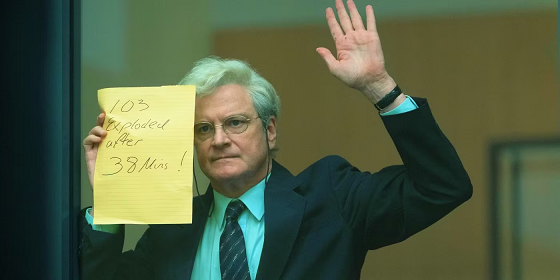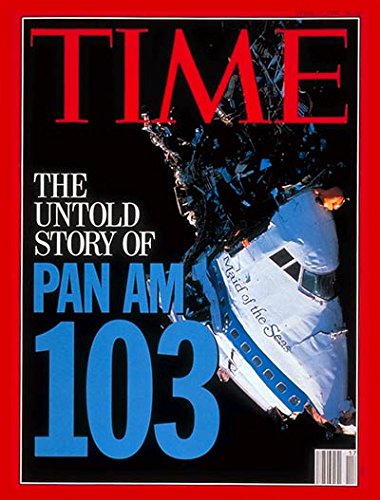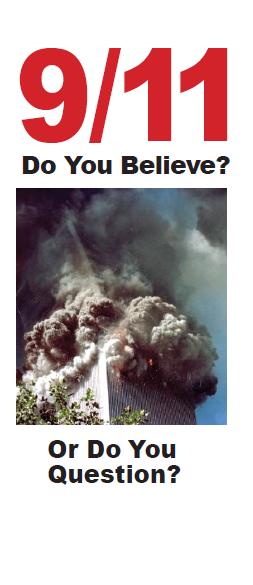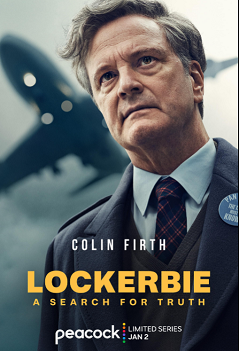
| Events | Resources | Evidence | About us |
History of False Flag Operations1988 Lockerbie, Scotland
|
Lockerbie: A Search for TruthLockerbie: A Search for Truth is a 2025 television series based on the true story of Jim Swire, who seeks justice after his daughter, Flora, dies on Pan Am Flight 103.
|
https://content.time.com/time/subscriber/article/0,33009,975399,00.html

|
Pan Am 103 Why Did They Die? Washington says Libya sabotaged the plane. Provocative evidence suggests that a Syrian drug dealer may have helped plant the bomb -- and the real targets were intelligence agents working for the CIA By Roy Rowan Monday, Apr. 27, 1992 "FOR THREE YEARS, I've had a feeling that if Chuck hadn't been on that plane, it wouldn't have been bombed," says Beulah McKee, 75. Her bitterness has still not subsided. But seated in the parlor of her house in Trafford, Pennsylvania, the house where her son was born 43 years ago, she struggles to speak serenely. "I know that's not what our President wants me to say," she admits..... |
|
However, working for Pan Am, [Juval Aviv] spent more than six months tracking the terrorists who the airline now alleges are responsible for the bombing. While his report has been written off as fiction by many intelligence officials, a number of its findings appear well documented. The central figure emerging from the Interfor investigation is a 44-year-old Syrian arms and drug trafficker, Monzer al-Kassar. His brother-in-law is Syria's intelligence chief, Ali Issa Duba, and his wife Raghda is related to Syrian President Hafez Assad. Al-Kassar has many passports and identities. Most important, he was part of the covert network run by U.S. Lieut. Colonel Oliver North. During the Iran- contra hearings, it was revealed that al-Kassar was given $1.5 million to purchase weapons. Questioned about al-Kassar, former U.S. National Security Adviser John Poindexter said, "When you're buying arms, you often have to deal with people you might not want to go to dinner with." It was through al-Kassar's efforts, or so he claimed, that two French hostages were released from Lebanon in 1986 in exchange for an arms shipment to Iran. The deal caught the eye of a freewheeling CIA unit code-named COREA, based in Wiesbaden, Germany. This special unit was reported to be trafficking in drugs and arms in order to gain access to terrorist groups. For its cover overseas, COREA used various front companies: Stevens Mantra Corp., AMA Industries, Wildwood Video and Condor Television Ltd. Condor paid its bills with checks drawn on the First American Bank (account No. 2843900) in Washington, D.C., which was subsequently discovered to be a subsidiary of the Bank of Credit and Commerce International. According to Aviv, agents in COREA's Wiesbaden headquarters allowed al- Kassar to continue running his smuggling routes to American cities in exchange for help in obtaining the release of the American hostages being held in Lebanon. At about the same time, al-Kassar's drug-smuggling enterprise was being used by the U.S.'s DEA in a sting operation. The DEA was monitoring heroin shipments from Lebanon to Detroit, Los Angeles and Houston, which have large Arab populations, in an attempt to nail the U.S. dealers. ... The bomb that ended up on the Pan Am jet could have been assembled by Khreesat. However, last month the Palestine Liberation Organization reported that it was built by Khaisar Haddad (a.k.a. Abu Elias), who is also a member of Jibril's Popular Front. Haddad purchased the detonator, the P.L.O. said, on the Beirut black market for more than $60,000. The detonator, in fact, is considered one of the main keys to the bombing puzzle. Thomas Hayes, a leading forensics expert, did the main detective work on a minute piece of timer recovered from the wreckage by Scottish authorities. In a recent book about the Lockerbie investigation, On the Trail of Terror, British journalist David Leppard reports that "Hayes is not prepared to commit himself publicly on whether the bomb that blew up Pan Am 103 was originally made by Khreesat and subsequently modified by timers of the sort found in possession of the Libyans." In fact, adds Leppard, "his authoritative view is that not enough of the bomb's timing device has been recovered to make a definite judgment about whether it was a dual device containing a barometric switch and a timer, or a single trigger device, which was activated by just a timer." James M. Shaughnessy, Pan Am's lead defense lawyer, has tried to drive a wedge into this opening left by Hayes, thereby casting further doubt on Libya's responsibility for the bombing.... ...While all the passengers ultimately made the connection to London, 11 suitcases, including the pilot's two bags, remained behind in Frankfurt. They were entered into the airport computer system and rerouted via the Pan Am flight. But only one of the pilot's suitcases was recovered at Lockerbie. The other had been mysteriously left behind in Frankfurt, and arrived safely in Seattle a day later. That story, which TIME has corroborated, doesn't prove Pan Am's claim that terrorists used al-Kassar's drug pipeline to pull a suitcase switch in Frankfurt. But it does support the theory that a rogue bag was inserted into the automated baggage-control system, as the secret FBI report indicates was possible. ...It wasn't until July 1990, when [Lester Knox Coleman III] Coleman spotted a newspaper picture of one of the Pan Am victims and recognized the young Lebanese as one of his drug- running informants, that he realized he might be of assistance to Pan Am..... In Nicosia, Coleman saw the supposedly controlled shipments of heroin, called kourah in Lebanon -- inspiration for the CIA operation's code name COREA -- grow into a torrent. The drugs were delivered by couriers who arrived on the overnight ferry from the Lebanese port of Jounieh. ... Coleman's DEA front in Nicosia, called the Eurame Trading Co. Ltd., was located on the top floor of a high-rise apartment near the U.S. embassy. He says the intelligence agency paid him with unsigned Visa traveler's checks issued by B.C.C.I. in Luxembourg.... ...In December 1988 al-Kassar picked up some news that threatened to shut down his smuggling operation. Charles McKee's counterterrorist team in Beirut that was investigating the possible rescue of the nine American hostages had got wind of his CIA connection. The team was outraged that the COREA unit in Wiesbaden was doing business with a Syrian who had close terrorist connections and might endanger their planned rescue attempt. Besides McKee, a key member of the team was Matthew Gannon, 34, the CIA's deputy station chief in Beirut and a rising star in the agency. After venting their anger to the CIA in Langley about al-Kassar, McKee and Gannon were further upset by headquarters' failure to respond. Its silence was surprising because Gannon's father-in-law Thomas Twetten, who now commands the CIA's worldwide spy network, was then chief of Middle East operations based in Langley. He was also Ollie North's CIA contact. MCKEE AND GANNON, joined by three other members of the team, decided to fly back to Virginia unannounced and expose the COREA unit's secret deal with al- Kassar. They packed $500,000 in cash provided for their rescue mission, as well as maps and photographs of the secret locations where the hostages were being held. Then the five-man team booked seats on Pan Am 103 out of London, arranging to fly there on a connecting flight from Cyprus. McKee's mother says she is sure her son's sudden decision to fly home was not known to his superiors in Virginia. "This was the first time Chuck ever telephoned me from Beirut," she says. "I was flabbergasted. 'Meet me at the Pittsburgh airport tomorrow night,' he said. 'It's a surprise.' Always before he would wait until he was back in Virginia to call and say he was coming home." ...In his book, Lockerbie: The Tragedy of Flight 103, Scottish radio reporter David Johnston disclosed that British army searches of the wreckage recovered more than $500,000 cash, believed to belong to the hostage-rescue team, and what appeared to be a detailed plan of a building in Beirut, with two crosses marking the location of the hostages. The map also pinpointed the positions of sentries guarding the building and contained a description of how the building might be taken. Johnston also described how CIA agents helicoptered into Lockerbie shortly after the crash seeking the remnants of McKee's suitcase. "Having found part of their quarry," he wrote, "the CIA had no intention of following the exacting rules of evidence employed by the Scottish police. They took the suitcase and its contents into the chopper and flew with it to an unknown destination." Several days later the empty suitcase was returned to the same spot, where Johnston reported that it was "found" by two British Transport Police officers, "who in their ignorance were quite happy to sign statements about the case's discovery."... |
Continue evidence on dc911truth.org
TABLE OF CONTENTS
9/11 Report Falsehoods
Sept 11 Operation Facts
False Flag History
Our 9/11 Truth Partners
DC 9/11 Truth releases latest brochure
|

|
Email: contact@dc911truth.org



